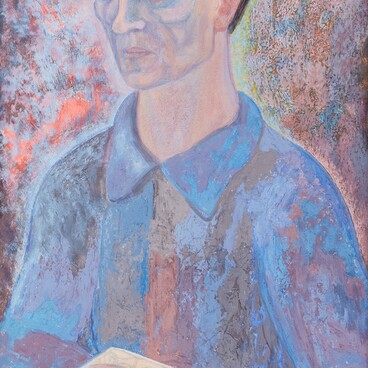Pavel Mikhailovich Kondratyev was a student of three major masters of the Russian classical avant-garde. Between 1923 and 1925, he studied at the Higher Art and Technical Studio, which was the former Academy of Arts. During that time, Kondratyev attended the workshop of Mikhail Vasilyevich Matyushin.
These were the artist’s answers to the questions from the 1924 questionnaire, “The main objective of the work — the spiritual wholesomeness of the painting; — the issue of ambiguity of sculptural elements; — the issues of the modern perception of multidimensional spaces; — the development of modern understanding and vision of some basic forms and symbols; — the search for a modern range of colors and principles of the harmony of colors and the approval of the Russian range in modern art.”
In 1925, Kondratyev became a student of Pavel Nikolayevich Filonov and a member of the Collective of Masters of Analytical Art. Seven years later, without interrupting his studies with Filonov, he was also tutored by Kazimir Severinovich Malevich. The students of Malevich guided Kondratyev through the techniques of Cézannism, Cubism and Suprematism.
From the 1930s, the artist collaborated with the magazines “Chizh” and “Yozh”, as well as with the Educational and Pedagogical Publishing House. He illustrated educational publications for the northern regions of the Soviet Union. The 1950s marked a new beginning in the artist’s career. In the mid-20th century, Pavel Kondratyev created a series of works, inspired by his trips to Chukotka, where he illustrated textbooks for local schools.
In the early 1960s, Kondratyev met the artist Vladimir Vasilyevich Sterligov and became close with the students of his circle. The work “Domes” belongs to the later period of the artist’s career, when he returned to Matyushin’s painting system and its basic principles, such as the expanded viewing and the use of domes and spheres in depicting the space.
During that time, Kondratyev worked on the series “Catastrophe”, “Domes”,“Pskov Land”, and “About the Sister of Mercy”. He turned to traditions of icon painting, while closely following the development of postwar abstraction, searching for a special Russian color and striving to make his works spiritually wholesome.

